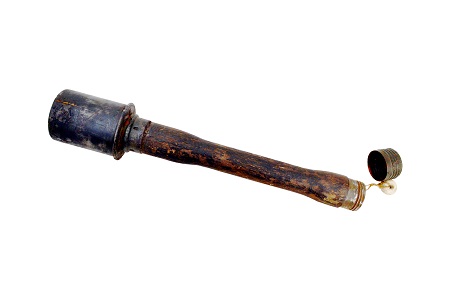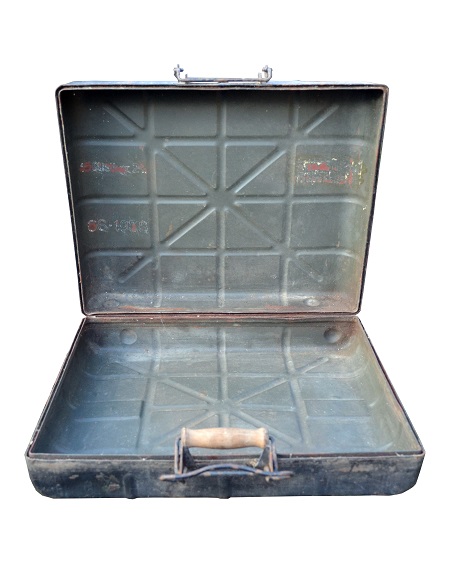
Principally there are only three types of grenades:
1) Defensive: designed to be used from a position of defence.
2) Offensive: designed to be used in the open, while on the attack.
3) Petards: these were essentially little more than demolition charges.
The defensive grenade type was preferred mainly by the French and British, as typified by the No36 Mills Bomb and the French F1. Both feature a heavy cast iron body, which contains the high explosive. The outside of the grenade body featured a segmented pattern; this was solely for the purpose of affording the user a good grip in order to prevent accidents and has NO effect on how the grenade explodes, as many believe to be the case. These grenades had a blast radius of 32 square metres, thus making it impossible to actually throw the grenade far enough away prevent the user being caught by the explosion. It is was for this reason that they are designated 'defensive', as the user had to consider their safety and that of their comrades when deploying, so they had to be thrown from behind a wall, from a trench, through a window, dropped into the hatch of a tank, etc. Naturally it goes without saying that the more confined the area in which the grenade is deployed, the more devastating the effects. The Mills Bomb did have one drawback compared to the F1, namely that the Mills required priming (they were transported without detonators) prior to going into battle, whereas the F1 merely required the removal of the pin to operate straight from the box.
Shown here is a sectionalised Mills Bomb. The lever holds in place a striker which is largely contained inside the central tube. Once released, the striker is propelled down the tube by the surrounding spring. On reaching the bottom, it strikes a percussion cap, which in turn ignites the fuse (typically 5-7 seconds) which burns along to the detonator, thus exploding the grenade.
The offensive grenade type was typified by the German Stick Grenade. These were originally copied from the Austro-Hungarian Rohr Grenade (examples of all these types can be found in the World War Gallery on the Our Wider Collection page). The Germans had redesigned the Stick Grenade after World War One; the Model 1924 (shown below) being the standard German Army grenade. However, stocks of the 1917 pattern were used during the 1939-40 period. The Model 1924 was essentially a more compact version of the 1917 variant. The concept of the stick grenade was simple and it fully conformed to the requirements of the 'offensive' theory, in that it could be thrown a greater distance than, say, the Mills or F1, The explosive was contained in a thin mild steel casing, which offered a more limited blast radius; thus it was safe to use in advance of one's own troops, in the open, without endangering themselves as the resulting explosion would provide the distraction required to facilitate the advance.
Shown here is the Model 1924 Stick Grenade. The grenade did require the insertion of the detonator, although once primed, it could be safely transported. To operate, the user merely unscrewed the cap at the base of the handle, to reveal a ceramic bead attached to a cord, which, when pulled, would ignite the friction fuse (again typically 5-7 seconds) before the grenade detonated.
Petards were, by World War Two, largely superseded by specialist demolition charges.
To read more about Grenades click here.
Back
